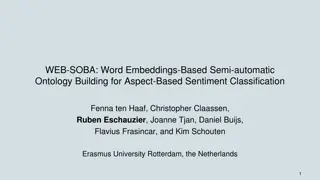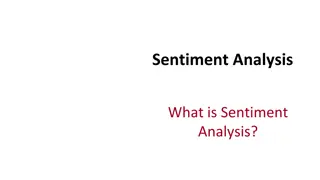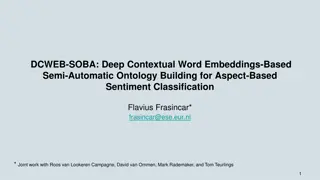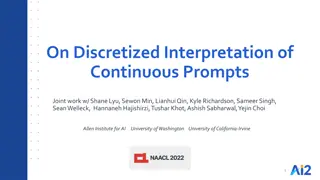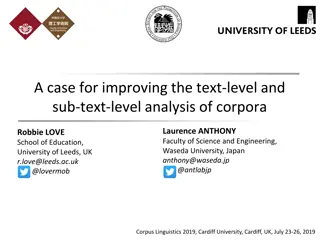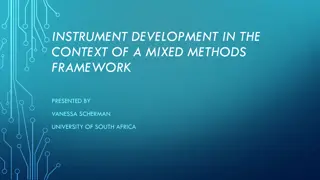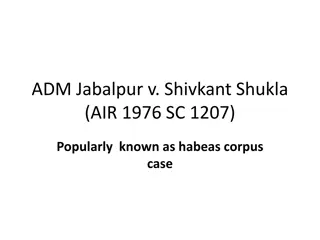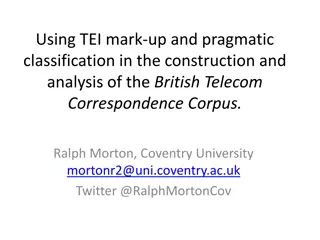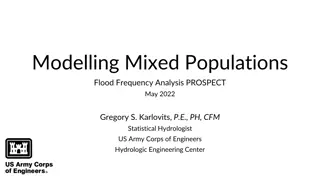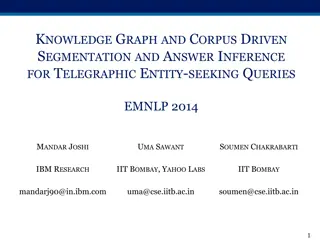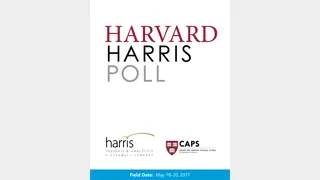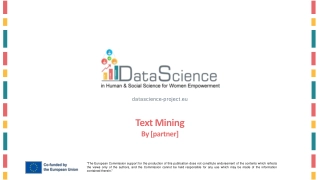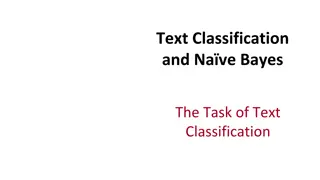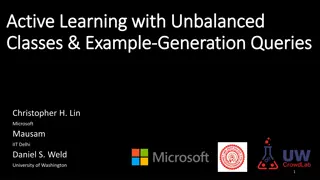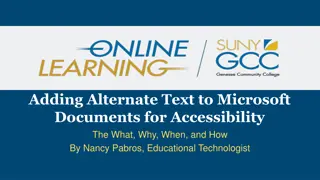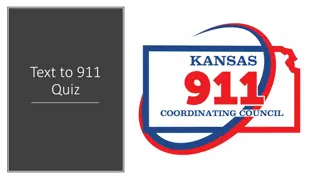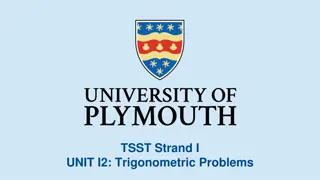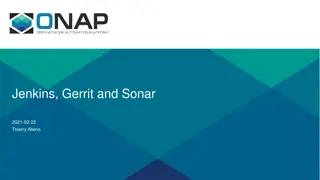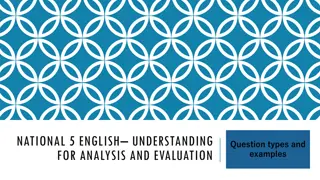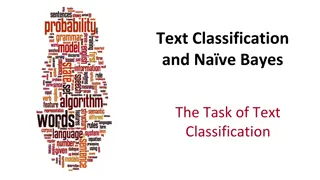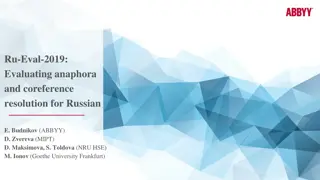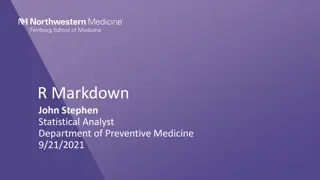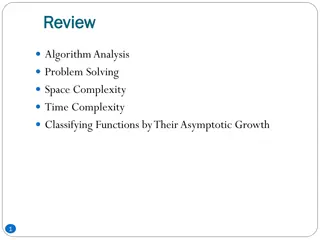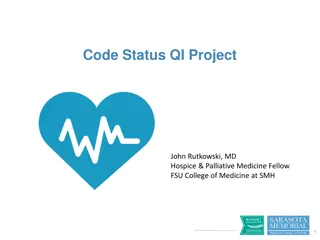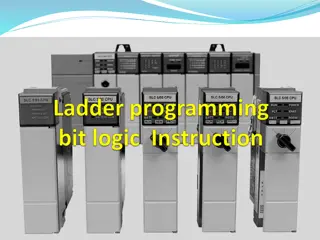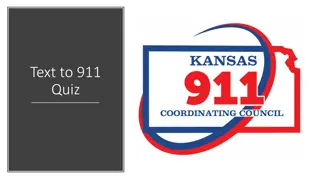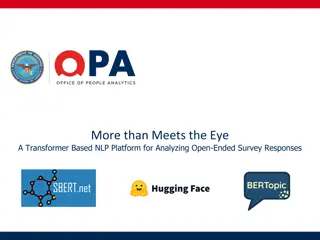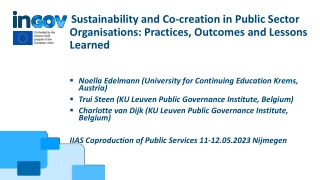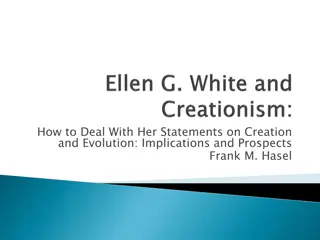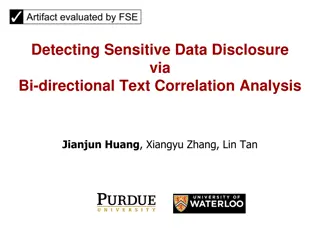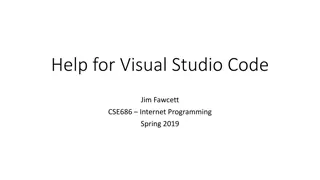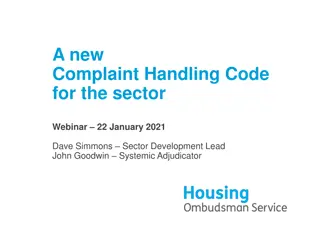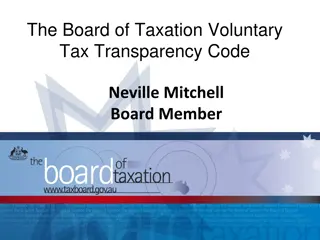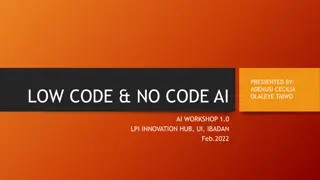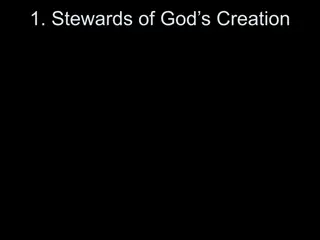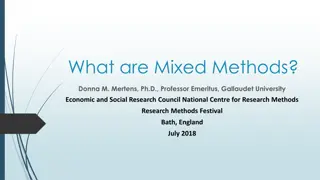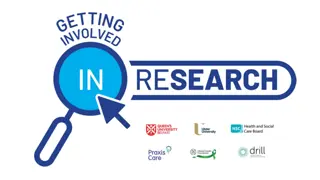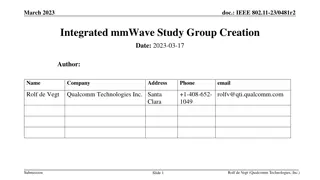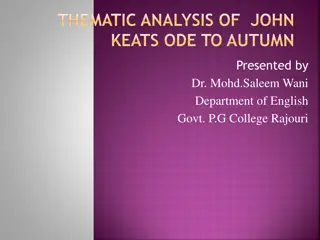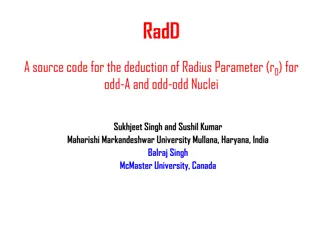Corpus Creation for Sentiment Analysis in Code-Mixed Tulu Text
Sentiment Analysis using code-mixed data from social media platforms like YouTube is crucial for understanding user emotions. However, the lack of annotated code-mixed data for low-resource languages such as Tulu poses challenges. To address this gap, a trilingual code-mixed Tulu corpus with 7,171 YouTube comments was created, involving 15 native Tulu speakers in the annotation process. The dataset shows varying sentiments like positive, negative, mixed feelings, and neutral comments, enabling further analysis for decision-making applications.
Download Presentation

Please find below an Image/Link to download the presentation.
The content on the website is provided AS IS for your information and personal use only. It may not be sold, licensed, or shared on other websites without obtaining consent from the author. Download presentation by click this link. If you encounter any issues during the download, it is possible that the publisher has removed the file from their server.
E N D
Presentation Transcript
Corpus Creation for Sentiment Analysis in Code-Mixed Tulu Text Asha Hegde1, Mudoor Devadas Anusha1, Sharal Coelho1, Hosahalli Lakshmaiah Shashirekha1, Bharathi Raja Chakravarthi2 1Department of Computer Science, Mangalore University, Mangalore, India 2National University of Ireland Galway, Ireland
Introduction Sentiment Analysis (SA) employing code- mixed data from social media helps in getting insights to the data and decision making for various applications. One such application is to analyze users emotions from comments of videos on YouTube. Social media comments do not adhere to the grammatical norms of any language and they often comprise a mix of languages and scripts. The lack of annotated code-mixed data for SA in a low-resource Dravidian language like Tulu makes the SA a challenging task. To address the lack of annotated code-mixed Tulu data for SA, a gold standard trlingual code-mixed Tulu annotated corpus of 7,171 YouTube comments is created. Sample comments from the proposed code- mixed Tulu dataset along with the type of code-mixing are shown in Table 1.
Continued... Table 1: Sample code-mixed comments in the corpus
Corpus Construction and Annotation Figure 1: Construction of annotated Tulu code-mixed dataset Data collection Preprocessing Annotation
Continued.. The annotation process involved 15 native Tulu speakers with diversity in gender, medium of education in their schooling, and educational level Krippendorff s inter-annotator agreement is used to measure the degree of agreement between annotators and the annotation for code-mixed Tulu corpus produced a nominal metric agreement of 0.6832 Figure 2: Details of annotators
Dataset # of Comments # of Comments, Not Tulu, 924, 13% # of Positive Comments, Negative, 670, 9% # of Mixed-Feelings Comments, Positive, 3164, 44% Neutral # of Comments, Neutral, 1201, 17% Negative # of Not Tulu Comments, Mixed- Feelings, 1212, 17% Table 2: Statistics of code-mixed Tulu corpus Figure 3: Class-wise distribution of Tulu annotated corpus
Experiments and Results Train set, Positive, 2501 Train set, Neutral, 984 Mixed- Feelings, 248 Train set Train set, Mixed- Feelings, 953 Test set, Train set, Not Tulu, 750 Tulu, 174 Train set, Negative, 548 Test set Test set, Negative, 122 Test set, Positive, 663 Test set, Neutral, 228 Test set, Not Figure 4: Details of Train and Test set Traditional ML algorithms are implemented using TFIDF of word bigrams and trigrams as features to predict emotions in code-mixed Tulu data in order to provide baseline. Across all the sentiment classes, MLP and SVM performed comparatively better with the same weighted average F1-score of 0.60. Further, the 5- fold cross validation for SVM classifier resulted in a weighted average F1-score of 0.62. Table 3: Performance measure of the benchmark systems
Conclusion In this paper, we have presented code-mixed Tulu dataset construction using YouTube comments for SA. Kripendorff s inter-annotator agreement is used to analyze the agreement between the annotators. Traditional ML algorithms are evaluated using TF-IDF of bi-grams and tri-grams on this code-mixed Tulu annotated corpus to provide baseline results. As the proposed work intends researchers to develop models for SA using this dataset, the dataset will be made available to the research community.
References Chakravarthi, B. R., Jose, N., Suryawanshi, S., Sherly, E., and McCrae, J. P. (2020a). A Sentiment Analysis Dataset for Code-Mixed Malayalam-English. In Proceedings of the 1st Joint Workshop on Spoken Language Technologies for Under- resourced languages (SLTU) and Collaboration and Computing for Under-Resourced Languages (CCURL), pages 177 184. Chakravarthi, B. R., Muralidaran, V., Priyadharshini, R., and McCrae, J. P. (2020b). Corpus Creation for Sentiment Analysis in Code-Mixed Tamil-English Text. In Proceedings of the 1st Joint Workshop on Spoken Language Technologies for Under-resourced languages (SLTU) and Collaboration and Computing for Under-Resourced Languages (CCURL), pages 202 210. Krippendorff, K. (2011). Computing Krippendorff s alpha-reliability. Mohammad, S. (2016). A Practical Guide to Sentiment Annotation: Challenges and Solutions. In Proceedings of the 7th workshop on computational approaches to subjectivity, sentiment and social media analysis, pages 174 179. Priyadharshini, R., Chakravarthi, B. R., Thavareesan, S., Chinnappa, D., Thenmozhi, D., and Ponnusamy, R. (2021). Overview of the DravidianCodeMix 2021 Shared Task on Sentiment Detection in Tamil, Malayalam, and Kannada. In Forum for Information Retrieval Evaluation, pages 4 6. Suryawanshi, S., Chakravarthi, B. R., Verma, P., Arcan, M., McCrae, J. P., and Buitelaar, P. (2020). A Dataset for Troll Classification of TamilMemes. In Proceedings of the WILDRE5 5th workshop on indian language data: resources and evaluation, pages 7 13. Shetty, M. (2004). Language Contact and the Maintenance of the Tulu Language in South India.


